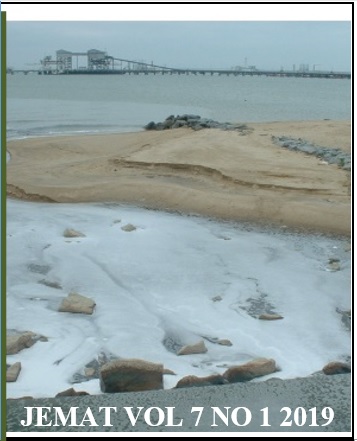Assessing Bioaccumulation Potentiality of Lead- and Chromium- Tolerant Bacterial Strain from Tannery Effluents of Bangladesh through Atomic Absorption Spectrophotometer
DOI:
https://doi.org/10.54987/jemat.v7i1.470Keywords:
Bioaccumulation; Achromobacter sp.; Multi drug resistant (MDR); halo-tolerant; AAS furnaceAbstract
Rapid growth of industries and directly discharge of hazardous toxic effluents particularly heavy metals into water streams creating alarming circumstances for entire ecosystem. With regard to removal of heavy metals, bioaccumulation is an advantageous technique which is comparatively safer and cheaper. In this context, attempt was made to evaluate the bioaccumulation potentiality of heavy metal removing microbial flora from tannery effluents of Bangladesh. Effluent sample was collected from the drainage pipes of leather industrial zone at Hazaribagh, Dhaka, Bangladesh with proper precautions and isolation was done on mineral salt medium supplimented with different concentrations of lead and chromium separately. Antibiotic resistance pattern was checked through disc diffusion method and efficacy was determined using Atomic Absorption Spectrophotometer (AAS) furnace. Isolated bacterial colony was gram negative, rod shaped, motile, white colored morphologically. The optimum culture condition for Achromobacter sp. was found at temperature 35°C, pH 7.6 and observed as a halo-tolerant strain that could utilize upto 10% salt. Molecular identification revealed that isolated bacterium was Achromobacter sp. (85% similarity) which was also similar with the results found in morphological, biochemical and physiological tests. Isolated Achromobacter sp. was multi-drug resistant (MDR) which was confirmed against penicillin, cefuroxime, cefixime and cefotaxime and LC50 value was evaluated through probit mortality software against Artemia salina at the concentration of 93.01±0.2 μl/ml. However, isolate did not show antagonistic effect against Rhizobacteria. Highest detoxification rate of chromium and lead were 96% and 93%, respectively at 100 μg/ml concentration at day 9 of exposure. From the present study, it was clear that isolated Achromobacter sp. had remarkable biosorption efficacy of the toxic lead and chromium from tannery effluents.
Downloads
Published
How to Cite
Issue
Section
License
Authors who publish with this journal agree to the following terms:
- Authors retain copyright and grant the journal right of first publication with the work simultaneously licensed under a Creative Commons Attribution License (http://creativecommons.org/licenses/by/4.0) that allows others to share the work with an acknowledgement of the work's authorship and initial publication in this journal.
- Authors are able to enter into separate, additional contractual arrangements for the non-exclusive distribution of the journal's published version of the work (e.g., post it to an institutional repository or publish it in a book), with an acknowledgement of its initial publication in this journal.
- Authors are permitted and encouraged to post their work online (e.g., in institutional repositories or on their website) prior to and during the submission process, as it can lead to productive exchanges, as well as earlier and greater citation of published work (See The Effect of Open Access).


